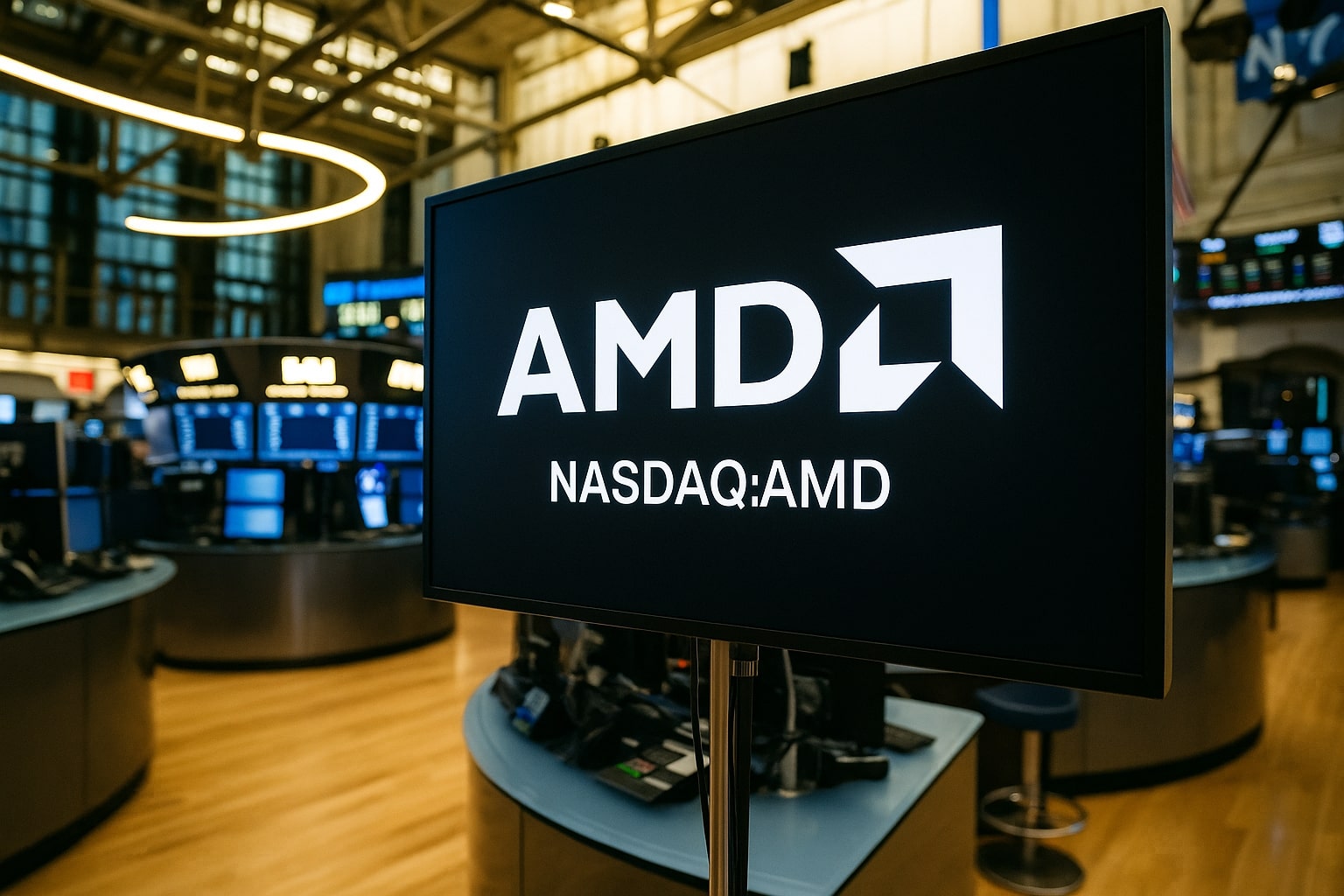NASDA:AMD Stock: Future Outlook and Growth Opportunities Amid Market Volatility
Advanced Micro Devices (NASDAQ:AMD) has remained resilient in a volatile market, especially with its significant rebound of over 30% since April lows. Despite global trade uncertainties and challenges from the semiconductor industry, AMD's stock has shown strong performance and upward momentum. This performance can largely be attributed to its data center business, which is a crucial segment that contributes nearly 49% of total revenue. The company’s ability to stay ahead despite external challenges like trade tensions and the growing competition in the AI sector raises important questions: How long can AMD continue to outperform?
The Impact of Trade Uncertainty on AMD’s Earnings and Stock Performance
Trade tensions, particularly between the U.S. and China, have raised doubts about the long-term impact on AMD’s business operations. Despite these external pressures, AMD has managed to steer through the market's turbulence with relatively small losses compared to other tech stocks. With semiconductor tariffs looming, there's a growing concern about reduced capital expenditure from AMD's core clients in data centers. This potential slowdown could affect AMD’s revenue, particularly in the data center sector that has been a strong performer. However, analysts still expect AMD to keep its momentum intact for the rest of 2025. As of now, AMD’s forward EBITDA multiple stands at 21.2x, which suggests the market has priced in considerable risks already. Given the challenges it faces, this level of pricing seems to indicate a reasonable risk-to-reward ratio for investors looking to capitalize on potential gains.
The Strength of AMD’s Data Center Business Amidst AI Expansion
AMD’s data center business has become increasingly important as a revenue driver, especially with the rise of artificial intelligence (AI) technologies. In 2024, the data center segment saw a significant 94% growth year-over-year. This surge in demand was driven by companies embracing AMD’s EPYC processors and MI300X chips for AI workloads, indicating that AMD’s exposure to the growing AI market could lead to future revenue growth. Despite the ongoing competition from Nvidia (NVDA), AMD has been making strides in catching up. The company’s chips have shown competitive performance in benchmarking tests, with AMD pricing its products at a more affordable level than Nvidia’s offerings. As of now, the company's AI chip revenue could potentially surpass $10 billion by 2025, increasing from $5 billion in 2024.
However, AMD’s revenue growth in the AI space still faces challenges. One significant risk is the increasing shift toward custom AI chips among hyperscalers such as Microsoft (MSFT) and Google (GOOG), which could impact AMD’s market share. These hyperscalers are focusing on developing chips tailored to their specific AI needs, which could reduce demand for AMD’s generalized AI processors. Nonetheless, with a robust product pipeline and a lower price point compared to competitors, AMD remains well-positioned to continue expanding in the AI market.
Valuation and Growth Potential for AMD Stock
Despite some uncertainties, AMD’s stock remains attractive for investors. The stock is currently trading at a relatively low forward PE multiple of 16.10 for the fiscal year ending in 2026, which is lower than some of its competitors like Nvidia (NVDA) and Qualcomm (QCOM). This valuation, combined with a high projected growth rate for AMD's earnings per share (EPS), suggests that the market may be underestimating the company’s future potential. AMD’s EPS estimates show a strong 51.8% YoY growth in Q1 2025, with a continued upward trajectory expected through 2026. If the company continues to show strong execution, particularly in its AI business and data center segments, the stock’s low valuation could provide a great entry point for long-term investors.
However, as AMD continues to shift from a cyclical semiconductor company to a more strategic compute infrastructure player, there’s a need to shift investor perception. The market has yet to fully price in the potential from AMD’s transition to platform-level growth, where revenue will increasingly be driven by AI infrastructure and software solutions rather than just hardware. If AMD can successfully monetize its platform, it could significantly improve its profitability and drive the stock price higher.
Challenges in Customer Concentration and Geopolitical Risks
A major risk to AMD's future performance is its reliance on a small number of customers, including hyperscalers like Microsoft, Amazon (AMZN), and Google. These clients account for a significant portion of AMD’s revenue, which means any changes in their demand or purchasing behavior could impact AMD’s earnings. Moreover, AMD’s exposure to China presents an additional layer of risk. Recent trade agreements and the potential for tariff reductions may benefit the company, but geopolitical risks remain a factor that could create instability in its revenue streams. AMD will need to diversify its customer base and reduce its reliance on a few large clients to mitigate this risk.
Outlook for the AI Chip Market and AMD’s Role in It
Looking ahead, the AI chip market is expected to grow rapidly, and AMD is well-positioned to capture a share of this expanding sector. While Nvidia currently holds a dominant position, AMD’s strategy of offering lower-priced chips that compete on performance gives it a solid growth path. AMD's AI chips, including the upcoming MI350 and MI400, are expected to generate significant interest in the market, with the potential to disrupt Nvidia’s dominance. Moreover, as AI adoption spreads across various industries, the demand for AI-specific chips is only set to increase. AMD’s ability to capitalize on this growth will be critical to its long-term success.
Investing in AMD: Buy, Hold, or Sell?
Given the current valuation, strong growth potential, and AMD's leading position in key markets like data centers and AI, the stock presents an attractive opportunity for long-term investors. The stock’s relatively low price-to-earnings (P/E) multiple combined with robust earnings growth expectations suggest that the market is underpricing the company’s future prospects. While risks from trade uncertainties and AI competition with Nvidia remain, AMD’s diversification into AI chips, low price point, and upcoming product launches provide strong upside potential. At its current price point, AMD could be a strong buy, especially as the stock is trading well below its growth potential. Investors should consider capitalizing on the current opportunity to buy and hold as AMD continues to recover and expand its market share in the AI space.
What Does the Future Hold for AMD’s Stock Price?
As AMD prepares for its Q1 2025 earnings announcement, market attention will be focused on its guidance for AI revenue and the impact of trade uncertainty on its financial performance. Given the expected growth in the data center segment and AMD’s increasing competitiveness in the AI chip market, the outlook remains optimistic. However, challenges from rising competition and geopolitical risks remain, which could affect AMD’s ability to maintain its growth trajectory. Investors should keep a close eye on the company’s quarterly earnings and future guidance to assess the stock’s potential.



















